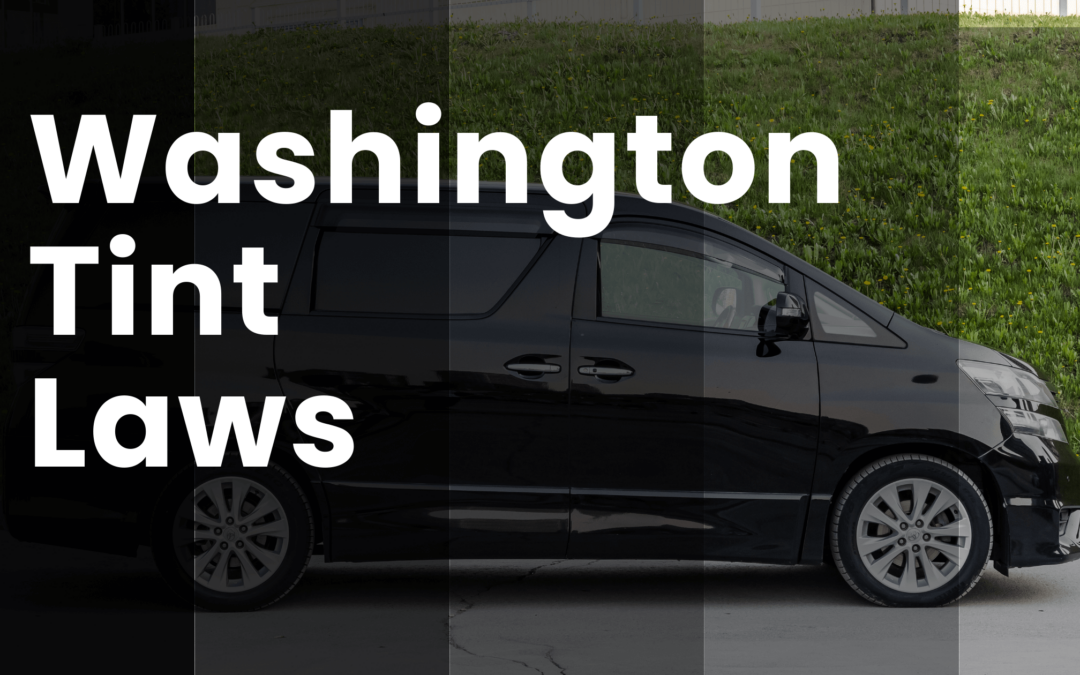Washington Tint Laws
In 2011, the state of Washington implemented its window tinting laws, and we’ve curated a detailed breakdown to help you navigate the intricacies of these regulations effectively.
Disclaimer
While I have a background in commercial law and strive to provide accurate and informative content, it’s important to note that I am not a legal expert. The information presented in this blog is based on my interpretation of the subject matter, and laws can vary by location and change over time. It is strongly recommended that readers verify all sources of information and consult with legal professionals or relevant authorities before making any decisions related to tint laws.
Understanding the Terminology Regarding Tint Laws
The most important part of the legislation is understanding what VLT is and how law enforcement services check or test the percentage.
What is VLT
VLT, or Visible Light Transmission, is a measure of the amount of visible light that can pass through a window tint or film. It is commonly used to determine the darkness or opacity of window tints, and it’s an important factor in window tinting laws and regulations.
VLT is typically expressed as a percentage. For example, a window tint with a VLT of 20% allows only 20% of visible light to pass through, making it relatively dark and less transparent. Conversely, a window tint with a VLT of 70% allows 70% of visible light to pass through and is much lighter and more transparent.
How do Law Enforcement services test the VLT percentage?
Window tinting laws vary by jurisdiction, and they often specify the maximum allowable VLT for different types of windows on a vehicle, such as the front windshield, front side windows, rear side windows, and rear window. These laws are designed to ensure that drivers have adequate visibility and that law enforcement can see into vehicles for safety and identification purposes. The manner that they go about testing the VLT is by using a VLT gauge/meter.
Here is a YouTube Short from @TrafficServices and @TorontoPolice showcasing the device and how it works. Even though it is in Canada, it still is helpful to understand how the tint darkness is measured.
Window Tint Darkness in Washington:
In Washington, the percentage of visible light transmission (VLT) serves as the basis for measuring the darkness of window tints. The VLT requirements differ for sedan cars and SUVs/vans:
Washington Car Tint Laws For Sedans:
- Windshield: The top 6 inches of the windshield can have non-reflective tint.
- Front Side windows: At least 24% of visible light must be allowed in.
- Back Side windows: More than 24% of light must pass through.
- Rear Window: A VLT of over 24% is mandated.
Tint Law For SUVs and Vans in Washington:
- Windshield: Similar to sedans, non-reflective tint is permitted on the top 6 inches.
- Front Side windows: These windows should allow more than 24% of light to pass through.
- Back Side windows: SUVs and vans are free to use any level of darkness on their back side windows.
- Rear Window: As with sedans, any level of darkness is permissible.
| Type of Window | Sedans | SUVs/Vans |
|---|---|---|
| Windshield | Top 6 inches can have non-reflective tint | Top 6 inches can have non-reflective tint |
| Front Side Windows | Must allow at least 24% of visible light | Must allow more than 24% of light |
| Back Side Windows | Must allow more than 24% of light | Any level of darkness is allowed |
| Rear Window | Must have a VLT of over 24% | Any level of darkness is allowed |
Window Tint Reflection in Washington:
Tints can reflect incoming light to mitigate glare and heat. In Washington, the regulations specify the permissible reflection levels:
For both sedans and SUVs/vans, front and back side windows should not be more than 35% reflective.
Additional Washington Window Tint Rules and Regulations:
Beyond the darkness and reflection levels, Washington’s window tinting laws include other significant provisions:
Side Mirrors
In this state, dual side mirrors are mandatory if the back window is tinted.
Restricted Colors
Washington law prohibits the use of yellow, red, and amber window tints.
Certificates
Film manufacturers must certify the films they sell within the state. To ensure compliance, it’s essential to check if your dealer uses certified film.
Stickers
Washington mandates the placement of a sticker that identifies legal tinting. This sticker should be located between the film and glass on the driver’s side window.
Medical Exceptions
Washington allows medical exemptions for special tint, recognizing the unique needs of certain individuals.
Regulations for Out-of-State Drivers
The same regulations apply to out-of-state drivers as those for drivers living in the State.
If you are from States such as Idaho and Oregon, you are expected to abide by these laws and regulations.
It’s essential to bear in mind that interpretations of Washington’s tinting laws and regulations may differ depending on your county or place of residence. To ensure strict adherence, we strongly recommend verifying this information with your local Department of Motor Vehicles (DMV) or law enforcement authorities.
Our information regarding Washington’s window tint laws was most recently updated in 2023. We are committed to providing accurate and current information. If you discover any inaccuracies or outdated data, please don’t hesitate to contact us. Your trust in our resources is of utmost importance, and we are dedicated to delivering the most reliable information available.

